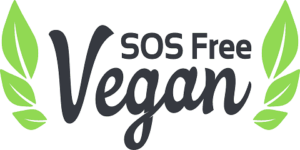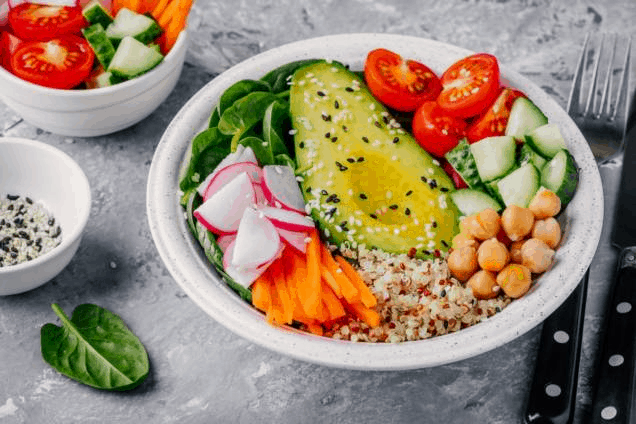Last Updated on April 23, 2023 by admin
What is SOS-free vegan? The vegan diet has become so familiarized that almost everyone knows what constitutes it. This is a step up from vegetarianism, in which a person gives up meat to focus on plant-based eating.
With veganism, you would refrain from eating meat, fish, poultry, and any animal products or byproducts, including eggs and dairy. Instead, your diet is filled with fermented and sprouted plant foods, nutritional yeast, seaweed, calcium-fortified plant yogurts and milk (and other dairy substitutes), meat substitutes like tofu, seeds (chia, flax, hemp, and more), nut butter, and legumes.
Like almost any diet, there are branches of vegetarianism, like lacto-ovo vegetarianism. With this diet, a person may consume eggs and dairy products. Lacto vegetarianism mixes dairy products with plant-based ones. There are branches of veganism, too, such as SOS-free vegan.
If you’ve ever been curious about trying SOS-free veganism for yourself, this guide will tell you everything you need to know about the diet. That includes reasons to go SOS-free, the benefits of doing so, what to consider before you start the diet, and what to expect. We’ll also throw in some well-known SOS-free vegans as well as some recipes to get you started.
What Is SOS-Free Vegan?
The “SOS” in SOS-free vegan stands for salt, oil, and sugar. Whether you’re making the food yourself, having it cooked at a restaurant, or buying it off grocery store shelves, you can rest assured that food that is SOS-free has no sugar, oil, or salt in it whatsoever.
While many people have been following SOS-free vegan for many years, the diet became especially popular in 2011. This was the year the documentary Forks Over Knives was produced. Lee Fulkerson wrote the documentary, which featured Brian Wendel and John Corry as producers and Fulkerson doing directorial duties. In the film, a plant-based, whole-food, low-fat diet was promoted. Specifically, it was stated that oils had no part of a healthy diet. It was even insinuated that an oil-free diet could potentially ward off chronic diseases or treat these if they were already in progression.
Sugars were also advocated against in Forks Over Knives, specifically those that are refined. Bleach flours too got a bad rap in the film. Instead, it was suggested that people focus on cutting out animal-based proteins and rely more on fruits, vegetables, tubers, legumes, and whole grains as the basis of a healthy diet.
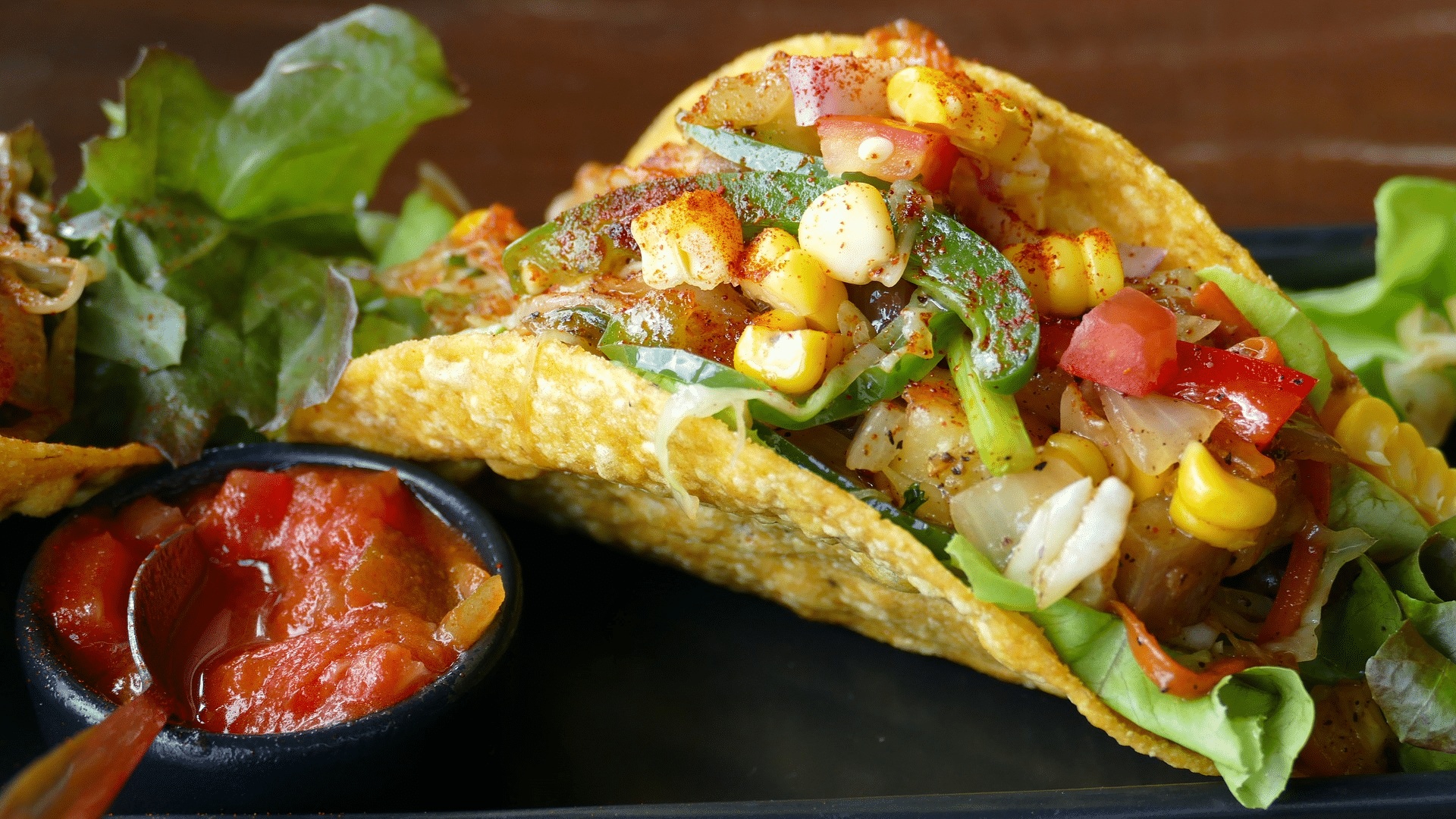
Why Go Salt-Free?
There are many reasons to consider omitting salt from your diet. According to data from LiveScience.com, it’s estimated that most people in the United States (90 percent) eat too much salt or sodium. WebMD posits that the problem will only get worse in the coming years. They predict that high blood pressure will afflict most Americans, 60 percent in all, by 2025. That’s less than 10 years away!
That’s our reality, unfortunately. It’s not healthy for people of any age to consume too much sodium, but it becomes especially risky the older you get. There’s so much hidden salt in many foods you eat; even sweet foods may be hiding some sodium. With an SOS-free vegan diet, you can ensure you’re free from unwanted sodium in your foods.
Here are several reasons to give up sodium in your diet for good:
- The chance of getting heart disease goes down. In case you weren’t aware, there are no other diseases or conditions that kill more Americans than heart disease.
- You could enjoy a longer life. According to research from senior service Synergy Homecare, when it comes to developing heart disease, if you’re classified as “low risk,” you could stretch your lifespan 10 more years. This is compared to “high risk” people, who don’t often have that luxury.
- If you have diabetes, it’s especially crucial that you avoid eating excessive amounts of sodium. You could get high blood pressure, which happens more often if you are already diabetic.
- You could avoid getting hypertension. This condition can eventually cause brain damage. While this is rare, it can happen, and it significantly degrades your quality of life.
- You can lessen the chances of getting kidney failure, in which your fluids are no longer balanced. Your kidneys cannot filter waste anymore, leading the blood to be more susceptible to damage. If left unchecked, you may develop chronic kidney disease or even acute renal failure.
- There is a connection between eating excessive amounts of sodium and developing a stroke. It’s also said that a high-sodium diet may impact a patient’s ability to recover from a stroke.
Why Go Oil-Free?
There are many types of oils out there that are used for cooking. These include the following:
- Semi-refined sunflower
- Semi-refined sesame
- Safflower
- Rice bran
- Peanut sometimes called groundnut oil
- Palm
- Mustard
- Avocado
- Soybean
- Linseed
- Corn
- Canola
- Palm
- Olive
Now, some people will argue that not all oils are inherently unhealthy. To understand what they mean we have to explain the types of fat. There are monounsaturated, polyunsaturated, and unsaturated fats. Monounsaturated fats may have more high-density lipoprotein or HDL cholesterol while having fewer low-density lipoproteins, or LDLs.
There is oleic acid in monounsaturated fats as well. According to some research, the chances of getting breast cancer may lower by consuming these acids. Since monounsaturated fats have a stronger membrane fluidity compared to other types of fats, it’s said they could even avert cardiovascular disease.
Polyunsaturated fats include the omega-3 fatty acids you can find in seafood, especially fish. Given that you’re a vegan, you can also get this omega-3s in fish oil or algal oil. There are more omega-3 fatty acids in safflower and sunflower oils than other types of oils. Polyunsaturated fats, when consumed in moderation, may also play a role in safeguarding against cardiovascular disease.
While monounsaturated fats might prevent breast cancer, eating too many polyunsaturated fats can actually boost the chances of developing this disease. That said, docosahexaenoic acid, commonly known as DHA, can lower that chance again if consumed frequently and in large quantities. DHA also boosts retinal neurotransmission and stimulation, brain grey matter health, behavioral performance, and cognitive thinking.
Lastly, there are saturated fats. These types of fats are in many types of foods, such as:
- Some salad dressings
- Goose, beef, and chicken fat
- Shortening, margarine, and butter
- Danishes, pastries, and cakes
- Oatmeal raisin and chocolate chip cookies
- Fruit chews, candy, and chocolate
- Sausage, hamburger meat, hot dogs, salmon, turkey, chicken, ham, pork, sirloin, and beef
- Whipping cream
- Two-percent and whole milk
- Ice cream
- Cheese
- Nuts, including walnuts, sunflower seeds, soybeans, sesame seeds, flaxseeds, pecans, peanuts, macadamias, cashews, and almonds when all are dry-roasted
In addition, saturated fats are concentrated in the following oils:
- Mustard
- Sunflower
- Soybean
- Linoleic safflower and high oleic safflower
- Rice bran
- Peanut
- Palm and palm kernel
- Olive
- Cottonseed
- Corn
- Coconut
- Canola
There are benefits to cutting out all oils, though, including:
- You may be less likely to have acne, immune system suppression, bowel issues, hormonal problems, acid reflux, and even some cancers.
- Oils can contribute to the chances of you getting heart disease, and you already know how dangerous that is.
- Most oils, especially the kinds that are heavy with saturated fats, are calorie-heavy. They’re also nutritionally-void. According to Karissa’s Vegan Kitchen, there are 4,000 calories for just a single pound of any kind of oil. Even if you cut it down to just a single tablespoon, you’re still consuming 120 unnecessary calories.
However, my stance and opinion on oils are similar to the messages in these videos:
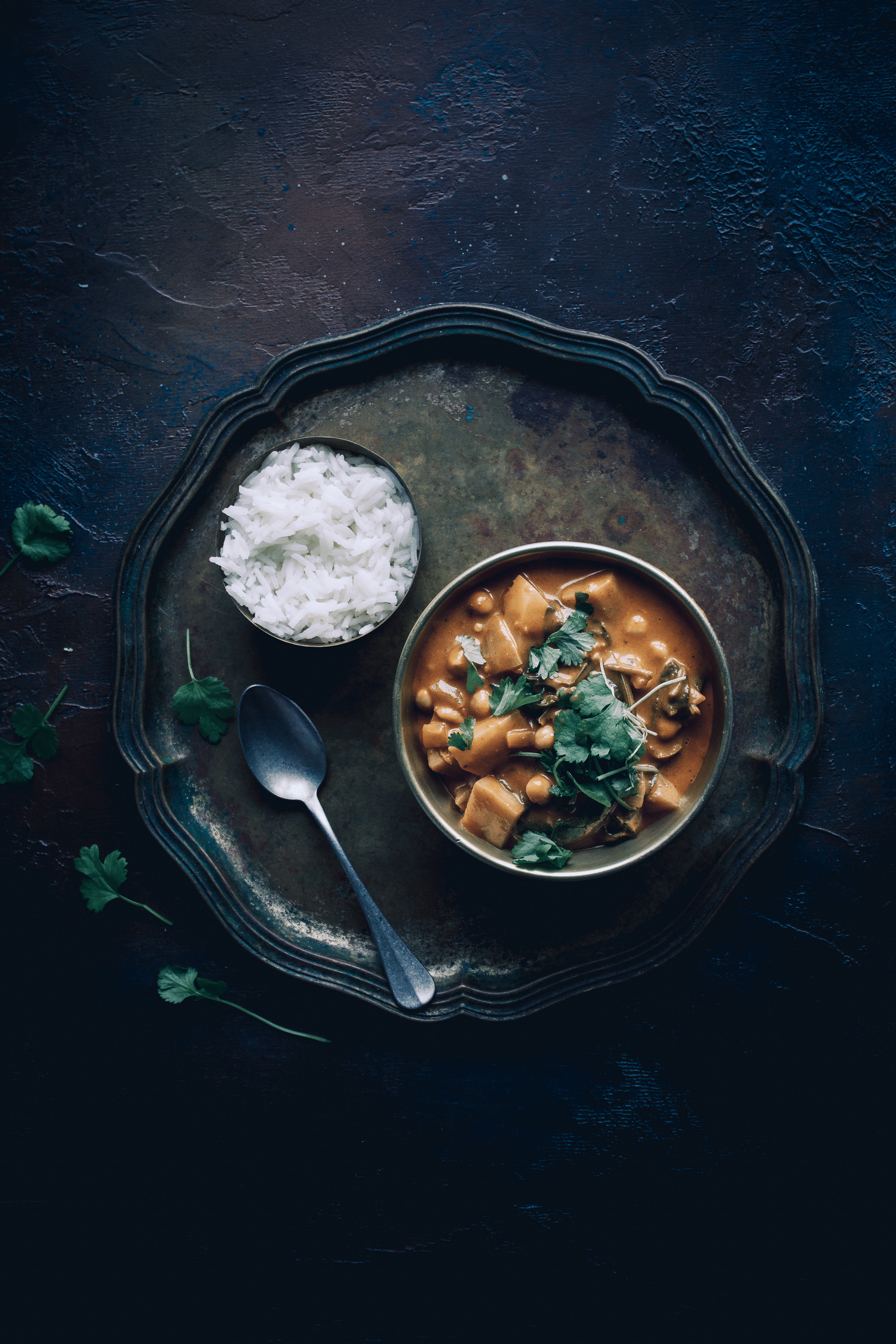
Why Go Sugar-Free?
Sugar can become addictive and is currently contributing to the obesity crisis that the US is battling. Sugar has the ability to gradually change the way your brain works, making you want more and more.
While wholly unnecessary, not all sugars are the monstrosities we make them out to be. There is such a thing as natural sugars. As the name suggests, these are not added, processed sugars. Instead, they’re the sweetness you can taste in fruits and even vegetables. These are often lactose and fructose. They don’t have much-added sodium and they’re not very calorie-dense, either.
It’s the added sugars which are the worst for your health. These foods have high-fructose corn syrup as the main ingredient, which shoots blood glucose levels way up. That can lead to health maladies such as heart disease, diabetes, and obesity. Do keep in mind that even foods that aren’t sweet, such as ketchup or salad dressing, often have high-fructose corn syrup somewhere on the ingredients list. That means that you can cut sweet foods out of your diet and still be getting too much sugar.
According to the University of California San Francisco (UCSF), added sugars are masquerading in most foods we eat, 74 percent in total. The reason you might not find high-fructose corn syrup on the list of ingredients is that it may go by other names, more than 60 in all. Some of these include:
- Yellow sugar
- Turbinado sugar
- Sweet sorghum
- Saccharose
- Rice syrup
- Panocha
- Muscovado
- Mannose
- Maltose
- Maltodextrin
- Grape sugar
- Glucose solids
- Fruit juice or fruit juice concentrate
- Free-flowing brown sugars
- Dextrose or dextrin
- Barley malt syrup
See how some of those names might confuse you? What even is panocha, muscovado, mannose, saccharose, or maltodextrin? Food manufacturers are hoping you don’t know.
In addition to avoiding potentially developing the whole host of medical conditions we outlined above, once you stop eating sugar, you gradually stop craving it as much. You’ll also lose weight.
Okay, So What Can You Eat?
That’s the thing, with an SOS-free vegan diet, you can eat more than you think. Later in this guide, we will share recipes for all meals of the day, including dessert. Just because you choose not to eat salt, sugar, or oil anymore doesn’t mean your food has to be bland. Here is a post about What You Can Eat on an SOS Free Vegan Diet that might be of interest to you.
You can use the following to spice up your meal without any salt:
- Cajun seasoning (watch for salt, though!)
- Curry powder
- Thyme
- Herbs
- Black pepper
- Garlic powder (again, watch for salt)
- Crushed rosemary leaves
- Oregano
- Basil
- Chives
- Onion powder
If you absolutely cannot go without salt, there are plenty of vegan salt substitutes you can try. These taste like salt without all the sodium.
As for sugar, foods like raw honey, some milk, vegetables, and fruits all contain natural sugar. This type of sugar, as you’ll remember from the last section, is fine to eat within moderation.
Here are some other sugar substitutes you might want to try that are all sugar-free:
- Yacon syrup
- Isomalt
- Xylitol
- Molasses
- Erythritol
- Maple syrup (sugar-free varieties only)
- Agave nectar
- Coconut sugar
- Stevia
Reasons to Try an SOS-Free vegan Diet
There are plenty of reasons you might want to start an SOS-free vegan diet. The first and most important reason is your health. If you want to avoid heart disease, cancers, high cholesterol, and other life-threatening diseases and conditions, then cutting out sugars, salts, and oils ought to help you do that.
You’re also eliminating unnecessary calories, especially by removing sugars and oils from your diet. That could lead to weight loss, which means you’ll look and feel better!
Some preexisting health conditions can be exacerbated by your diet. These include high cholesterol, diabetes, polymyalgia, psoriasis, arthritis, and digestive issues such as Crohn’s disease or ulcerative colitis. If you’ve seen your doctor and tried medications and other treatments to no avail, it’s time to make alterations to what you eat. Cutting out salt, oil, and sugar might be the answer.
Considerations to Make Before Starting This New Diet
By this point, you’re convinced that the SOS-free vegan diet is right for you. You’re interested in trying it. How easy is it going to be? That all depends.
If you’re a vegetarian who’s recently gone vegan, you might find it hard to suddenly give up salt, sugars, and oils. After all, you’ve only just gotten used to not eating meats, and you’re focused on omitting dairy from your diet now. Going SOS-free vegan may be too big of a change all at once. That’s okay. You might want to adjust to your veganism first and then reconsider the SOS-free vegan diet later.
If you’ve been a vegan for years, though, you should be able to transition into SOS-free vegan with relatively few challenges. That doesn’t mean this is going to be totally easy, though.
You might want to start by cutting out one of the three food types first: salt, sugar, or oil. Removing all three of your diet at the same time can lead to failure, as it’s often too big of an adjustment to make at once.
Depending on what you eat as part of your diet most often, it might be more difficult to omit certain foods than others. Some people become addicted to salt like they do sugar, and they find it really hard to eat savory foods without salt. Others discover that the vice-like grip sugar has on their brains makes it incredibly difficult to give up sugar for good.
To stay on track, use the substitutes mentioned above. These are still flavorful but do not contain sugar or salt, respectively. Also, be prepared to start making a lot of foods at home. Remember, even savory condiments like ketchup and salad dressings can be loaded with sugar and salt, so you might want to make your own condiments, too.
You also have to get smarter about your shopping. Know the different names sugar and sometimes salt calls themselves and avoid foods with those ingredients. With veganism, gluten-free, and other diets more mainstream than ever, you should have no problem finding vegan substitutes at even your average grocery store. If you’d prefer, there are plenty of vegan-centric grocery stores out there. These include Wegman’s, Whole Foods, and Trader Joe’s.
Like grocery stores, many restaurants are now more accommodating to those with special diets, and often have vegan items on their menus. Since you can’t see the ingredients in front of you, it might be best to question the chefs or wait for staff about what goes into their dishes. This might seem frivolous at first, but it will help you stick to your diet, so it’s important.
Remember that you’re not quitting salt, sugar, and oil cold turkey. It’s okay if you have to give these up slowly yet surely. You can start by cutting back on how much you consume before omitting SOS ingredients from your diet altogether. There’s no need to be ashamed if you give in to a craving, either. It happens. Sugar and salt are powerful stuff, after all, and giving them up permanently is no easy feat.
What You Can Expect While on the Diet
Like any diet, SOS-free veganism is an adjustment at first. As we mentioned in the last section, it’s going to take some time and patience to get used to eating this way. You may have cravings for sugar or salt, especially if you’re giving them up gradually. You may struggle to prepare foods without these ingredients at first, as well as oil.
We do recommend that, before you start your diet, you look at several dozen recipes. Bookmark these so you can make them later. If you’re stumped on what you might eat on an SOS-free vegan diet, don’t worry. We’ll share some pretty great recipes later in this guide.
By having these yummy recipes earmarked for later, you’re more likely to get excited about your food and thus keep up your diet. You’ll also see that SOS-free veganism isn’t all boring, bland, and flavorless. You can still make your favorite vegan foods without salt, oil, and sugar and have them taste great!
Your success
The success of your diet is all about the mindset. If you’re trying SOS-free veganism because you want better health, then you must remind yourself of your goals. Thinking of the diet negatively, such as it is a punishment, can deter you from meeting those goals.
You might have other concerns about starting an SOS-free vegan diet. After all, as we said before, your brain can get addicted to sugar and salt. Won’t you go through a withdrawal-like process, almost like an addiction to drugs or alcohol? Won’t it be uncomfortable? You might go through a withdrawal process, so to speak, but it won’t be uncomfortable or painful. You’ll have cravings, sure, but with time, these passes.
What about the way our taste buds work? Just as a refresher, taste buds, or gustatory/taste receptor cells, enjoy the tastes of umami, sweet, bitter, sour, and salty. Remember that you’re not depriving yourself of these tastes with an SOS-free vegan diet. Even though you’re giving up sugars and salts, there are other ways to mimic these flavors.
It’s okay to have questions and worries about SOS-free veganism before you start. Once you get on the diet, though, you’ll see a lot of those worries dissipate. Your brain may be wired to be addicted to sugar and salt, but it wasn’t always that way. That addiction only occurred because of your eating behaviors. Once you modify those behaviors, your brain reverts back to its non-addicted state.
You won’t want to eat foods with salt, sugar, or oil anymore. You’ll be okay without them. In fact, with time, you might even start to enjoy SOS-free foods more than what you used to eat. If you ever have a meal that contains SOS ingredients, it might not taste right. Other SOS-free vegans have said the flavors become “excessive.”
You can succeed at an SOS-free vegan diet if truly want to! It’s all about getting over the adjustment hump.
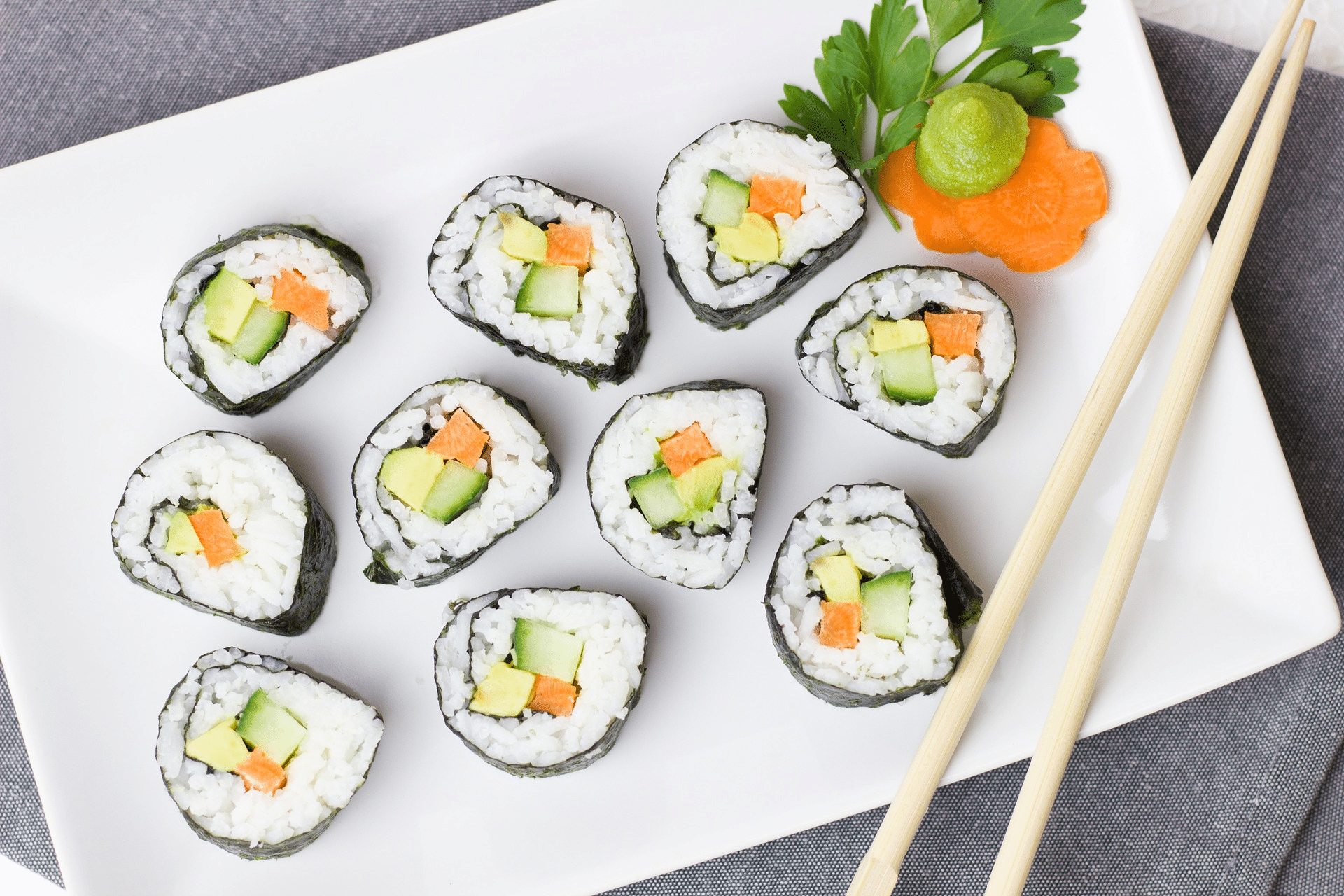
Well-Known SOS-Free Vegans
Now that you’re strongly considering starting the SOS-free veganism lifestyle, you might want to read up on the lives and accomplishments of these well-known vegans. Their viewpoints and advice can aid you in your journey to a healthier vegan lifestyle.
Alan Goldhamer
A doctor and author, Alan Goldhamer also opened the TrueNorth Health Center. Based in Santa Rosa, California, here you can receive bodywork, massages, psychotherapy, chiropractic care, and other medical services. A graduate of Portland, Oregon’s Western States Chiropractic College, Goldhamer is even a licensed osteopathic physician in Australia.
Goldhamer’s works have appeared in many medical magazines and journals. It all started in 2001 when the Journal of Manipulative and Physiological Therapeutics accepted his “Medically Supervised Water-Only Fasting in the Treatment of Hypertension” piece. This was his initial dive into medical writing.
The next year, in 2002, another piece of his was published, this time in the Journal of Alternative and Complementary Medicine. This article included a study and was based on his first article about treating hypertension with water-only fasting.
Today, he’s a huge proponent of an SOS-free vegan diet. He’s published two books on healthful, vegan eating: 1997’s The Health-Promoting Cookbook: Simple, Guilt-Free, Vegetarian Recipes and 2003’s The Pleasure Trap: Mastering the Hidden Force That Undermines Health and Happiness.
Ray Cronise
Always involved in the health world, Ray Cronise became a mainstream name when he penned his own book about veganism. Long before that, he worked in science, specifically fluid physics, neural networks, material science, and biophysics. He has more than 25 years of experience doing so and even worked at the NASA Marshall Space Flight Center for a time.
He also paired up with Peter Diamandis (who founded XPRIZE) to create the Zero Gravity Corporation, a company that specializes in parabolic planes. These create a sense of weightlessness. Said planes were even used in a Sports Illustrated photo shoot for their famed swimsuit issue.
After that venture, Cronise was in 4-Hour Body, the workout video from Tim Ferriss. Around this same time, Cronise was also burning fat via cold stress and advocating for this. Then he wrote his own book called Our Broken Plate: How Our Mastery of Food and Environment May Have Contributed to Unprecedented Obesity and Chronic Disease. Cronise made a Kickstarter campaign to get the book published and distributed. He is also one of the authors of Plant-Based Nutrition.
Joel Fuhrman
One of the bigger names in veganism is Dr. Joel Fuhrman. He’s a celebrity doctor who was once a figure skater for the US World Figure Skating Team back in the 1970s. He competed vigorously until a career-ending injury sidelined him. The alternative medicinal treatments he relied on, according to Fuhrman himself, helped him get back on his feet.
Fuhrman decided a career change was necessary, and so he got into medicine to help others in situations like what he went through. He also began advocating for alleviating chronic disease and obesity via nutritarianism. He believes that, through a combination of cooked and raw vegetables, it’s possible to achieve greater health. Fuhrman also created an Aggregate Nutrient Density Index, where foods are classified based on their micronutrients. Whole Foods adopted this index not too long after.
He’s published a slew of books over his long and illustrious career, including:
- 1995’s Fasting and Eating for Health: A Medical Doctor’s Program for Conquering Disease
- 2003’s Eat to Live: The Revolutionary Formula for Fast and Sustained Weight Loss
- 2005’s Disease-Proof Your Child: Feeding Kids Right
- 2008’s Eat for Health; Lose Weight, Keep it Off, Look Younger, Live Longer
- 2008’s Eat Right America Food Scoring Guide
- 2010’s Nutritarian Handbook and ANDI Food Scoring Guide
- 2011’s Super Immunity: The Essential Nutrition Guide for Boosting Your Body’s Defenses to Live Longer, Stronger, and Disease Free
- 2012’s The End of Diabetes
- 2013’s Eat to Live Cookbook: 200 Delicious Nutrient-Rich Recipes for Fast and Sustained Weight Loss, Reversing Disease, and Lifelong Health
- 2014’s The End of Dieting: How to Live for Life
- 2016’s The End of Heart Disease: The Eat to Live Plan to Prevent and Reverse Heart Disease
- 2017’s Fast Food Genocide: How Processed Food Is Killing Us and What We Can Do About It
- 2017’s Eat to Live Quickly and Easy Cookbook: 131 Delicious Recipes for Fast and Sustained Weight Loss, Reversing Disease, and Lifelong Health
His 2003 book, Eat to Live: The Revolutionary Formula for Fast and Sustained Weight Loss, experienced the most success. It spent 90 weeks atop the Advice & Misc. list as well as skyrocketing to the top of the New York Times bestseller list.
Douglas Lisle
The founder of Esteem Dynamics, a wellbeing and human psychology approach, Douglas Lisle is another major name in SOS-free vegan. He started his interest in health at the University of California, San Diego, where he graduated summa cum laude. He then continued his education at the University of Virginia, earning his Clinical Psychology Ph.D. there.
After working at Palo Alto, California’s National Center for Post-Traumatic Stress Disorder’s Department of Veteran Affairs as well as at Stanford University as a psychology lecturer, Lisle sharpened his focus on depression and anxiety disorder treatments, relationship satisfaction, self-esteem, wellness, and health.
He’s a part of the McDougal Wellness Program, acting as its psychologist. He also works at TrueNorth Health Center as the Director of Research.
Inspired by the likes of Geoffrey Miller, Steven Pinker, David Buss, Leda Cosmides, John Tooby, and Richard Dawkins, Lisle seeks to bridge the gap between vegans and non-vegans with educational videos and other resources.
Handy SOS-Free Vegan Recipes You Can Make Today
As we’ve mentioned a few times in this guide, it’s possible to make practically any meal enjoyable on your vegan diet, even if you’ve gone SOS-free vegan. With substitutes and the introduction of other real, natural flavors, you eventually will find that you don’t even miss the oil, salt, and sugar in your favorite dishes. We’ve compiled several SOS free vegan recipes to try for each meal of the day: breakfast, lunch, dinner, and even dessert. We also threw in some snacks that are filling and oh-so-easy to make.
Breakfast – SOS Free Vegan
- Hash browns — Yes, that’s right, you can still enjoy the classic breakfast staple hash browns, even on an SOS-free vegan diet. You’ll only need some ground black pepper, an avocado, and several Yukon Gold potatoes to make it happen. This recipe doesn’t even require oil for cooking.
- Orange-berry muffins — With almond milk, walnuts, flax seeds, lemon juice, rolled oats, and nutmeg, these orange-berry muffins are still yummy even without salt or sugar. The secret ingredients are applesauce and raisins, which keep the muffins together while adding flavor. Don’t forget the fresh oranges and berries, which make for a unique but irresistible combination. Breakfast never tasted so good.
- Banana cinnamon rolls — If you’re really in the mood to indulge, try making these banana cinnamon rolls. They only require some water, cinnamon, bananas, and dates. You’ll never want to go back to the heavy cinnamon rolls you used to enjoy for family breakfasts ever again after eating these!
Lunch
- Black bean and yam salad — Enjoy a lighter and totally nutritious lunch with this delicious recipe. You’ll need an avocado, chopped cilantro leaves, cooked black beans, chard, collard greens, and/or kale, minced garlic, red bell pepper, yellow onion, yams, and uncooked quinoa. Don’t forget to make your own SOS-free dressing! You’ll need taco seasoning and lime juice to do it.
- Tomato rice soup — Another light yet filling lunch, this soup will give you zest and energy for the afternoon ahead. Get ready to grab these ingredients: fresh basil, Swiss chard, granulated garlic, dried Italian herb seasoning, cremini or white mushrooms, celery, tomatoes, long-grain brown rice, white or navy beans, and white or yellow onions.
- Avocado chickpea salad collard wraps — This colorful green dish is portable, making it perfect for lunch. Collard leaves are the base of the wrap, which includes lemon zest, cilantro, chickpeas, celery, carrots, bell pepper, and an avocado. Pepper and salt substitute add a zip of flavor.
Dinner
- Pineapple stir-fry — With noodles or brown rice, you’ll feel full and satisfied with this fun, summery pineapple stir-fry. To make this recipe, you should have green onions, red pepper flakes (adjusted for spiciness), brown rice vinegar, minced ginger, cubed pineapple, pineapple juice, cremini or white mushrooms, red bell pepper, celery, carrots, minced garlic, and yellow onions.
- Enchilada casserole — You’ll forget all about Taco Tuesday with this delicious casserole. Make sure you have avocado, cilantro, corn tortillas (unsalted), kale, canned corn, zucchini, black beans, tomatoes, oregano, chili powder, chopped garlic, a red bell pepper, and a white or yellow onion.
- Polenta pizza — Yes, that’s right, there’s no need to give up pizza! You just need to make it SOS-free. That means using the cornmeal known as polenta for the crust. Rosemary and granulated onion add flavor to the polenta. Nondairy milk and water can be used as a cheese substitute.
Snacks – SOS Free Vegan
- Baked tofu — This snack is as easy-peasy as it gets. You’ll bake the tofu for about a half an hour instead of frying it up using oil. Feel free to mix it with cornstarch before baking for crispier edges but a center that is still soft.
- Pizza hummus — No, there’s no actual pizza here, just the tasty flavors of it in a hummus dip. To make it yourself, you’ll need tomato puree, tahini (the runnier, the better!), lemon juice, dried oregano, garlic powder, garbanzo beans, and basil. This is one snack you can keep to yourself, or, if you’re feeling generous, share with friends or family.
- Butternut squash mac and cheese — The “cheese” in this mac and cheese is—you guessed it—butternut squash! Mix it with nutmeg, turmeric, smoked paprika, black pepper, garlic powder, Dijon mustard, lemon juice, and sweet onion and you get a tasty, fragrant dish.
Dessert – SOS Free Vegan
- Brownies — You can make this classic dessert by using ground flax, baking powder, vanilla extract, cocoa powder, medjool dates, and black beans. These brownies look just as good as non-SOS ones do and taste even better. With real cocoa powder, you’re not sacrificing any chocolate flavor. You won’t even notice the black beans or dates!
- Oatmeal raisin cookies — To keep these cookies SOS-free vegan, you’ll need a hefty list of ingredients. It includes raw walnuts, raisins, vanilla extract, almond butter, cinnamon, rolled oats, and pitted dates. These have more of a soft granola texture than a cookie texture, but that makes them all the more addictive!
- Mini pies — From strawberry to peach, apple to cherry, you can make these mini pies with any fruit you want. The only sugar you’ll get is that natural sugar. The topping and crust are made of nondairy milk, pitted dates, cinnamon, raw pecans, and rolled oats. Flavor the fruit sauce with cinnamon, lemon juice, and more dates.
Conclusion
SOS-free veganism is a diet that omits all sugars, salts, and oils. Too much sodium or salt in your diet can lead to conditions like high cholesterol and heart disease. That’s one of the biggest diseases in the United States, as death rates from heart disease are high. Excess sugar, which is found in many foods we eat (even the savory ones), can also lead to heart disease. It’s also possible to get diabetes and other conditions from too much sugar. On top of that, the addictive qualities of sugar make it hard to give up.
Since oils offer next to no nutritional value, you’re doing your health a favor by omitting them from your diet.
It will certainly take some time to adjust to going SOS-free vegan. Once you do, though, you’ll soon find you don’t even like the taste of oil, salt, or sugar anymore. It will seem like too much.
Hopefully, this guide addressed many of your major questions or concerns about making the switch to an SOS-free vegan diet.
Good luck with your new dietary adventure!
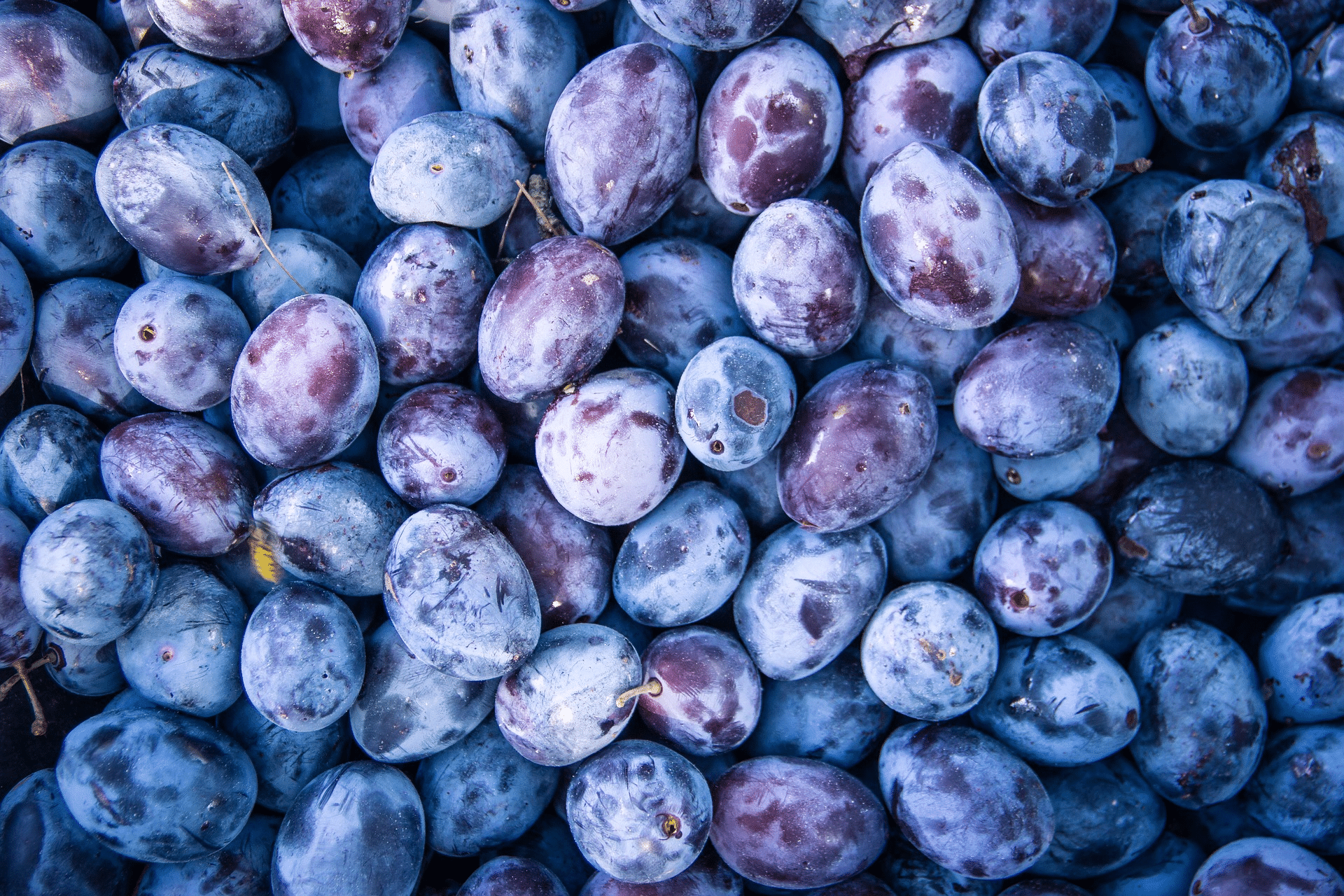
Recent Posts
You’ve read this blog and it’s certainly piqued your curiosity about what it means to be an SOS-free vegan. You’ve learned about this branch of veganism from our introductory post and maybe...
Vegans Desserts! Few things taste better than a refreshing ice cream cone on a hot summer’s day. Now that you’ve given up sugar and oil (not to mention salt) and gone vegan though, you may feel...
